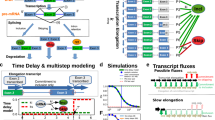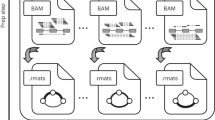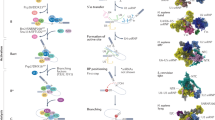Abstract
Trans-splicing, the in vivo joining of two RNA molecules, is well characterized in several groups of simple organisms but was long thought absent from fungi, plants and mammals. However, recent bioinformatic analyses of expressed sequence tag (EST) databases suggested widespread trans-splicing in mammals^1-2^. Splicing, including the characterised trans-splicing systems, involves conserved sequences at the splice junctions. Our analysis of a yeast non-coding RNA revealed that around 30% of the products of reverse transcription lacked an internal region of 117 nt, suggesting that the RNA was spliced. The junction sequences lacked canonical splice-sites but were flanked by direct repeats, and further analyses indicated that the apparent splicing actually arose because reverse transcriptase can switch templates during transcription^3^. Many newly identified, apparently trans-spliced, RNAs lacked canonical splice sites but were flanked by short regions of homology, leading us to question their authenticity. Here we report that all reported categories of non-canonical splicing could be replicated using an in vitro reverse transcription system with highly purified RNA substrates. We observed the reproducible occurrence of ostensible trans-splicing, exon shuffling and sense-antisense fusions. The latter generate apparent antisense non-coding RNAs, which are also reported to be abundant in humans^4^. Different reverse transcriptases can generate different products of template switching, providing a simple diagnostic. Many reported examples of splicing in the absence of canonical splicing signals may be artefacts of cDNA preparation.
Similar content being viewed by others
Article PDF
Author information
Authors and Affiliations
Rights and permissions
About this article
Cite this article
Tollervey, D., Houseley, J. Apparent non-canonical trans-splicing is generated by reverse transcriptase in vitro. Nat Prec (2010). https://doi.org/10.1038/npre.2010.4203.1
Received:
Accepted:
Published:
DOI: https://doi.org/10.1038/npre.2010.4203.1



